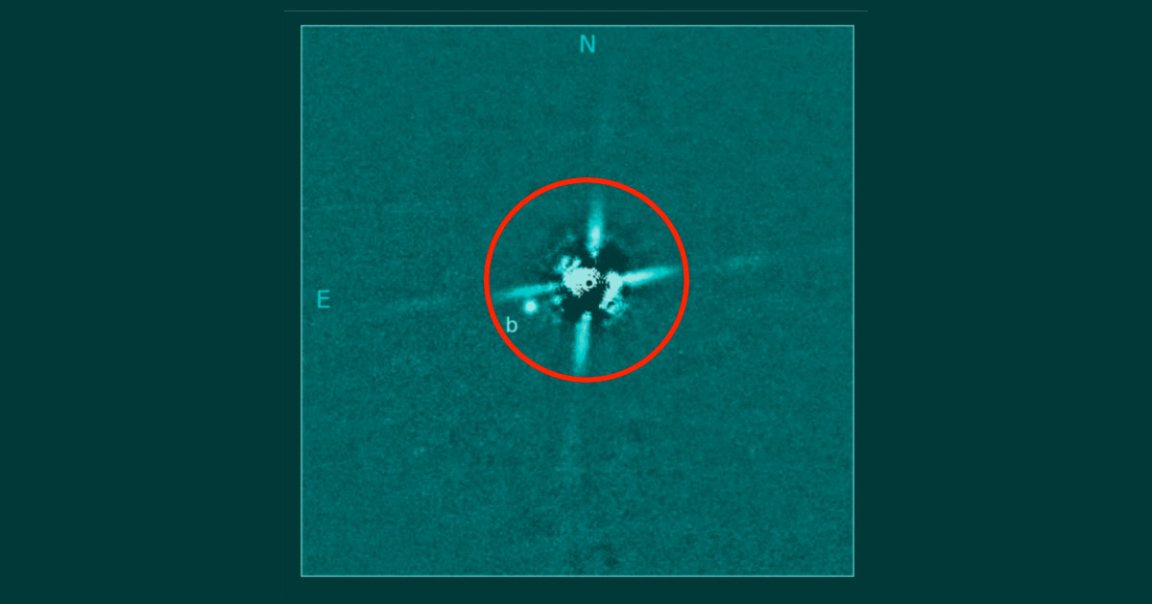
Baby Planet
Astronomers have discovered the youngest planet ever observed — and they say it’s even bigger than Jupiter.
The international team of researchers, led by the University of Hawaii, discovered the planet — dubbed 2M0437b — in a “stellar nursery” roughly 450 light-years away, according to a press release from the university about their findings in Monthly Notices of the Royal Astronomical Society. They added that the planet is “a few times more massive than Jupiter” and formed several million years ago, which is a long time in human years, but the blink of an eye on a cosmological scale.
“This serendipitous discovery adds to an elite list of planets that we can directly observe with our telescopes,” Eric Gaidos, professor at the University of Hawaii and lead author of the study, said in the release. “By analyzing the light from this planet we can say something about its composition, and perhaps where and how it formed in a long-vanished disk of gas and dust around its host star.”
Stellar Nursery
The stellar nursery where the planet was discovered is located in a molecular cloud — an area of space that’s highly conducive to the formation of stars and planets.
Despite being a few million years old, it’s still the youngest planet astronomers have ever seen. First spotted in 2018, it took three years to confirm that it was a planet orbiting a star due to how slowly the star moved across the sky. The researchers eventually discovered that the planet’s orbit was 100 times wider than the distance from the Earth to the Sun, and about 20 times farther than our own system’s Jupiter.
Lava Hot
The team also found that the infant planet is still incredibly hot due to the energy emitted during its creation. In fact, they said in the release that the planet’s temperature is “similar to the lava erupting from Kīlauea Volcano,” referring to a prominent active volcano in Hawaii.
Now they hope that even more insights about the young planet can be made with even more advanced technology from NASA.
“Observations with space telescopes such as NASA’s Hubble and the soon-to-be-launched James Webb Space Telescope could identify gases in its atmosphere and reveal whether the planet has a moon-forming disk,” Gaidos said in the release.
READ MORE: Infant planet discovered by UH-led team using Maunakea telescopes [University of Hawaii]
More on exoplanets: Scientists Manage to Study Weather on Planet in Different Solar System